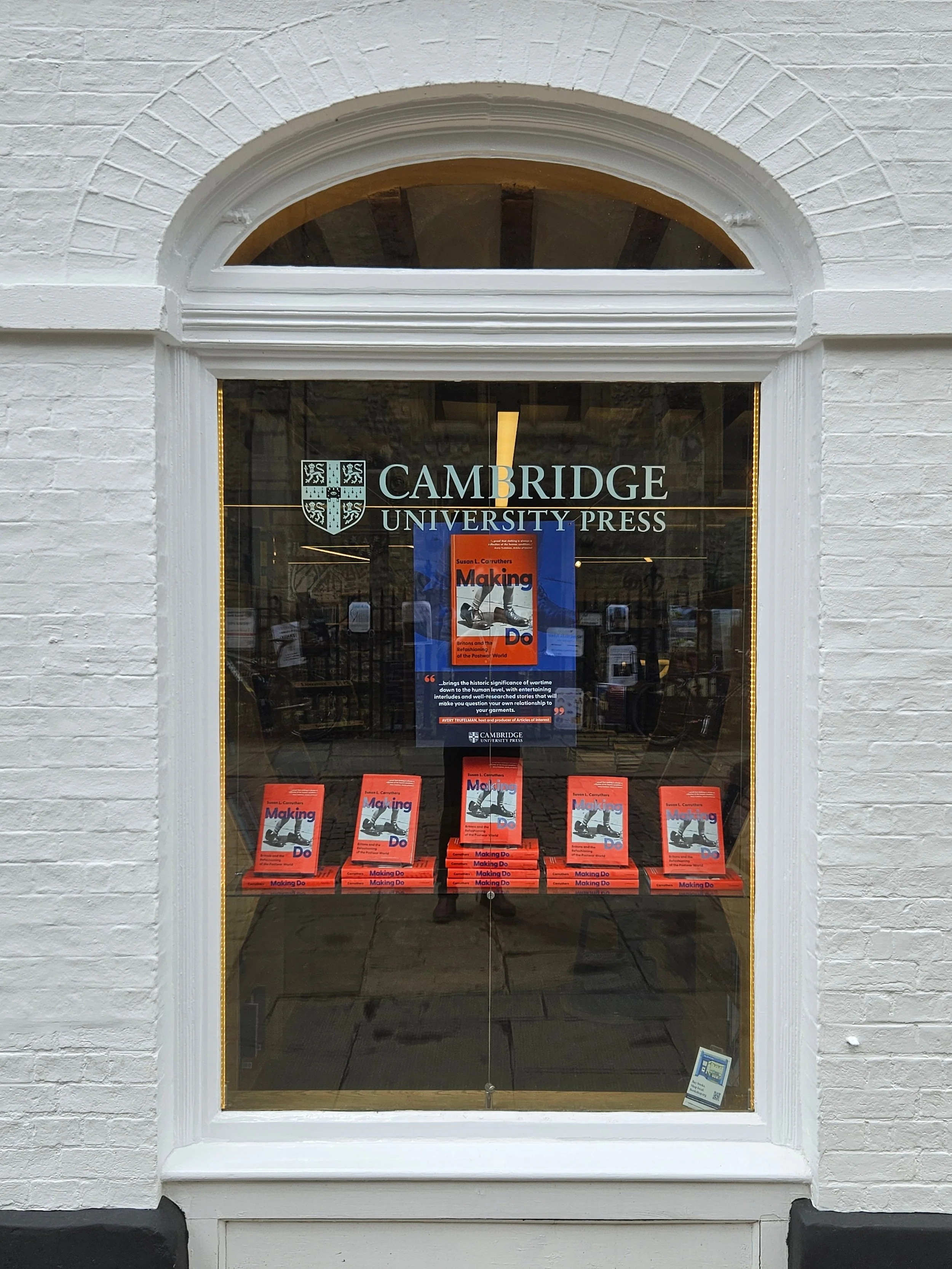Making Do
Published in April 2025
A Sunday Times “Book of the Week” 20 April 2025
Imagine a world in which clothing wasn't superabundant – cheap, disposable, indestructible – but perishable, threadbare and chronically scarce. Eighty years ago, when World War II ended, a textile famine loomed. What would everyone wear as uniforms were discarded and soldiers returned home, Nazi camps were liberated, and millions of uprooted people struggled to subsist? In this richly textured history, Carruthers unpicks a familiar wartime motto, 'Make Do and Mend', to reveal how central fabric was to postwar Britain. Clothes and footwear supplied a currency with which some were rewarded, while others went without. Making Do moves from Britain's demob centres to liberated Belsen – from razed German cities to refugee camps and troopships – to uncover intimate ties between Britons and others bound together in new patterns of mutual need. Filled with original research and personal stories, Making Do illuminates how lives were refashioned after the most devastating war in human history.
From the Sunday Times, 20 April 2025: “In this brilliantly researched and beautifully written book Susan L Carruthers, a professor at the University of Warwick, explores how clothing enabled and even compelled individuals to forge new identities in a landscape utterly transformed by six years of global warfare.”
REVIEWS FOR Making do
This is a necessary inoculation for anyone prone to nostalgia. Making Do is proof that clothing is always a reflection of the human condition- especially, when those conditions are dire. Carruthers deftly brings the historic significance of wartime down to the human level, with entertaining interludes and well-researched stories that will make you question your own relationship to your garments.
Avery Trufelman, host and producer of Articles of Interest
From Land Girl breeches to demob suits, austerity chic to Dior’s New Look, Making Do follows the fascinating story of bodies in motion, through air raids, rationing, and recycling, as a nation sought to dress the part for war and peace.
Alan Allport, author of Britain at Bay: The Epic Story of the Second World War, 1938-1941
Garments are our social skin. This engaging, intimate history of the social and political life of clothing and footwear reveals human vulnerability, resilience, and adaptability in a way that changes the way we think of the postwar world.
Joanna Bourke, author of What It Means To Be Human

